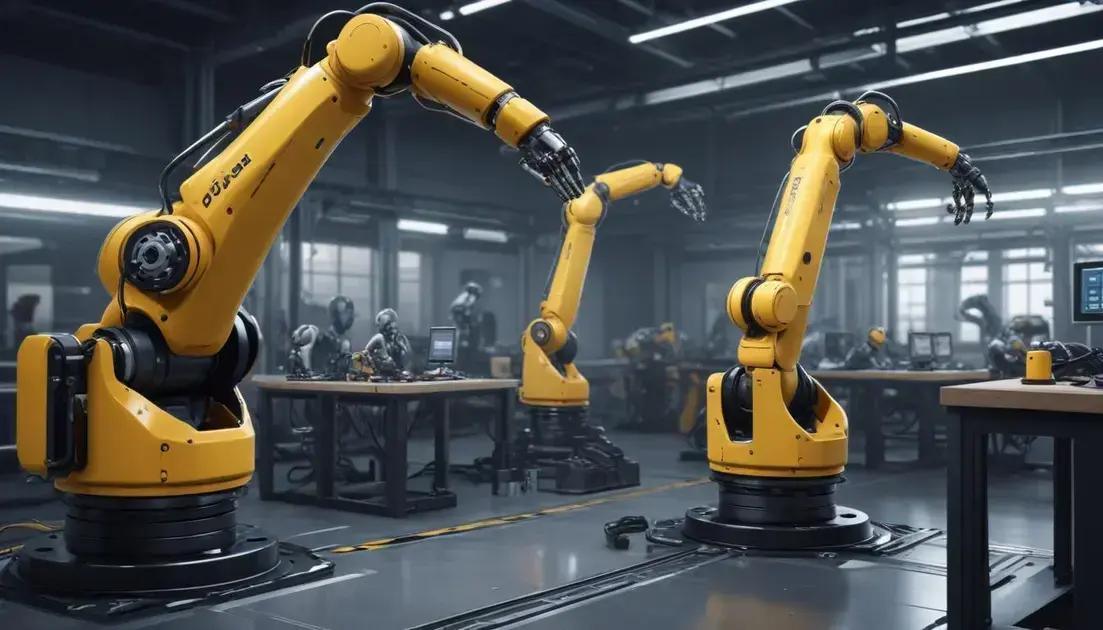
The Industrial Revolution: Changing the Fabric of Society
The Industrial Revolution, a period spanning roughly from the late 18th to the early 19th centuries, stands as a watershed moment in human history. This era irrevocably altered the fabric of society, shifting production from manual labor to machine-based manufacturing and setting the stage for the modern world we inhabit today. This comprehensive exploration delves into the multifaceted aspects of the Industrial Revolution, examining its technological advancements, societal impact, economic consequences, and enduring legacy.
The Genesis of Industrialization: Britain’s Pioneering Role
While the seeds of industrialization were sown across Europe, it was Great Britain that provided the fertile ground for its explosive growth. A confluence of factors uniquely positioned Britain to lead this transformative period. Abundant natural resources, particularly coal and iron ore, fueled the burgeoning industries. Coal provided the essential energy source for powering steam engines and smelting iron, while iron became the fundamental building block for machines and infrastructure. Britain’s robust and expanding transportation infrastructure, including canals and increasingly improved roads, facilitated the efficient movement of raw materials and finished goods, a critical component for large-scale manufacturing.
The agricultural revolution, preceding the Industrial Revolution, played a crucial, albeit often overlooked, role. Improvements in farming techniques, crop rotation, and selective breeding led to increased food production with fewer laborers. This surplus agricultural labor migrated to urban centers, providing the necessary workforce for the burgeoning factories. The enclosure movement, while controversial for its displacement of peasants, also contributed to this migration.
The intellectual climate of the time fostered innovation and technological advancement. A culture that valued experimentation and practical application of scientific principles created an environment ripe for breakthroughs. The establishment of scientific societies and the dissemination of knowledge facilitated the sharing of ideas and accelerated the pace of technological progress.
The pivotal invention of the steam engine by James Watt in 1769 proved transformative. Earlier steam engines were inefficient and impractical, but Watt’s improvements drastically increased their efficiency and reliability, providing a powerful and consistent energy source for factories and machinery. This invention spurred further innovation and laid the groundwork for the mechanization of various industries.
The textile industry served as the initial catalyst for industrialization. The invention of the spinning jenny, the water frame, and the power loom dramatically increased the speed and efficiency of textile production. These innovations, coupled with the readily available power from steam engines, led to a massive increase in the output of cloth and other textiles, transforming the industry and creating a demand for further technological advancements.
The Rise of Factories and the Factory System:
The steam engine and textile machinery necessitated a new production model: the factory. Factories centralized production, bringing together workers and machines under a single roof. This system, while increasing efficiency and output, also drastically altered the lives of workers. The factory system demanded a disciplined workforce, operating under strict schedules and supervision. This shift from independent artisans and cottage industries to the regimented factory life led to profound social and economic changes.
The factory system often involved long working hours, low wages, and dangerous working conditions. Child labor was widespread, with young children working long hours in hazardous environments for meager pay. The lack of safety regulations resulted in numerous accidents and injuries. The intense demands of factory work also had a negative impact on the health and well-being of workers, contributing to high rates of illness and mortality.
The concentration of workers in factories also fostered the growth of urban centers, as people migrated from rural areas in search of employment. This led to rapid urbanization and the creation of large, densely populated industrial cities, often characterized by overcrowding, poor sanitation, and inadequate housing.
Transportation Revolution: Connecting the Industrial World
The Industrial Revolution was not solely defined by manufacturing innovations; it also witnessed a simultaneous revolution in transportation. Improvements in road construction, the expansion of canal networks, and, most significantly, the advent of railroads revolutionized the movement of goods and people. Canals allowed for the efficient transport of heavy materials over long distances, reducing the cost of transportation. Improved roads facilitated faster travel and the delivery of goods to wider markets.
The development of steam-powered locomotives and the construction of extensive rail networks were arguably the most transformative aspect of the transportation revolution. Railroads drastically reduced travel times and transport costs, connecting previously isolated regions and facilitating the growth of national and eventually, international trade. The speed and efficiency of rail transport stimulated economic growth, enabled the expansion of markets, and facilitated the movement of raw materials and finished goods on an unprecedented scale.
The Social Landscape Transformed: New Classes and Urban Life
The Industrial Revolution engendered significant social upheaval. The rise of factory owners and industrial capitalists created a new wealthy elite, while the factory workers formed a new working class. This created a stark class divide, with vast disparities in wealth and living conditions between the owners of the means of production and the laborers who worked within them. This class disparity fueled social unrest and the rise of labor movements advocating for workers’ rights.
The rapid urbanization that accompanied industrialization led to the growth of sprawling, densely populated cities. While cities offered employment opportunities, they also presented challenges. Overcrowding, poor sanitation, and inadequate housing led to the spread of disease and high mortality rates. The living conditions of the working class were often deplorable, characterized by cramped tenements, lack of access to clean water and sanitation, and widespread poverty.
The growth of cities, however, also fostered a new cultural landscape. The concentration of people created a demand for new services and amenities, including public transportation, entertainment venues, and educational institutions. This led to the development of new forms of social interaction and community life, although these benefits were often unevenly distributed across the social strata.
The Rise of Labor Movements and the Fight for Workers’ Rights
The harsh working conditions prevalent during the Industrial Revolution sparked widespread discontent among the working class. The formation of labor unions and the emergence of labor movements marked a significant turning point in the fight for workers’ rights. These organizations sought to improve wages, reduce working hours, and improve working conditions.
Early labor movements faced significant obstacles, including legal restrictions on union activity and employer resistance. However, through collective action, strikes, and protests, workers gradually gained concessions from employers and governments. The passage of factory acts, limiting working hours and child labor, represented significant legislative victories for workers’ rights. The struggle for workers’ rights was a long and arduous process, but it laid the foundation for modern labor laws and social welfare programs.
Technological Advancements: A Cascade of Innovation
The Industrial Revolution was characterized by a relentless wave of technological innovation. Beyond the steam engine and textile machinery, numerous other inventions transformed various aspects of production and life. Advances in metallurgy led to the production of stronger and more durable iron and steel, which were essential for building machinery, railroads, and infrastructure. The development of new chemical processes revolutionized industries such as soap making, bleaching, and the production of dyes.
The invention of the telegraph revolutionized communication, enabling instant transmission of information over long distances. This improved coordination within businesses and facilitated the growth of international trade. The development of new machine tools enabled the mass production of standardized parts, further increasing efficiency and reducing costs.
The Environmental Impact: A Darker Side of Progress
The Industrial Revolution’s relentless pursuit of economic growth had a significant and largely negative impact on the environment. The widespread use of coal for fuel resulted in severe air pollution in industrial cities, contributing to respiratory illnesses and environmental degradation. The discharge of industrial waste into rivers and waterways polluted water sources and harmed aquatic life. Deforestation to provide fuel and raw materials further exacerbated environmental damage. The long-term consequences of this environmental degradation are still being felt today, highlighting the need for sustainable practices in industrial development.
Global Impact: Spreading the Industrial Revolution
While Britain led the initial phase of the Industrial Revolution, its impact eventually spread across the globe. Other European countries, such as France, Germany, and Belgium, gradually adopted industrial technologies and practices. The United States also experienced rapid industrialization, benefiting from its abundant natural resources and a growing population. The Industrial Revolution eventually reached other parts of the world, although at varying paces and with different consequences.
The Enduring Legacy: Shaping the Modern World
The Industrial Revolution’s legacy remains deeply embedded in the modern world. The technological advancements, economic systems, and social structures that emerged during this era continue to shape our lives. The mass production techniques developed during this period are still used today, although with significant advancements in automation and technology. The economic systems that emerged, such as capitalism and industrial production, have become dominant global forces.
The social changes brought about by the Industrial Revolution, including urbanization, the rise of the working class, and the development of labor movements, continue to shape modern societies. The environmental challenges resulting from the Industrial Revolution serve as a critical reminder of the need for sustainable development practices. Understanding the complexities of the Industrial Revolution is essential for navigating the challenges and opportunities of the 21st century.
Conclusion: A Transformative Era and its Lessons
The Industrial Revolution was a transformative period, characterized by both remarkable progress and significant challenges. Its impact on society, the economy, and the environment is undeniable and far-reaching. While it propelled unprecedented economic growth and technological advancement, it also exposed the inherent inequalities and environmental costs associated with unfettered industrial development. Reflecting on the Industrial Revolution’s complex legacy allows us to gain valuable insights into the challenges we face today and to strive towards a more sustainable, equitable, and just future. The lessons learned from this transformative era are crucial as we continue to navigate the complexities of the modern world, striving for a future that balances progress with sustainability and social justice.


